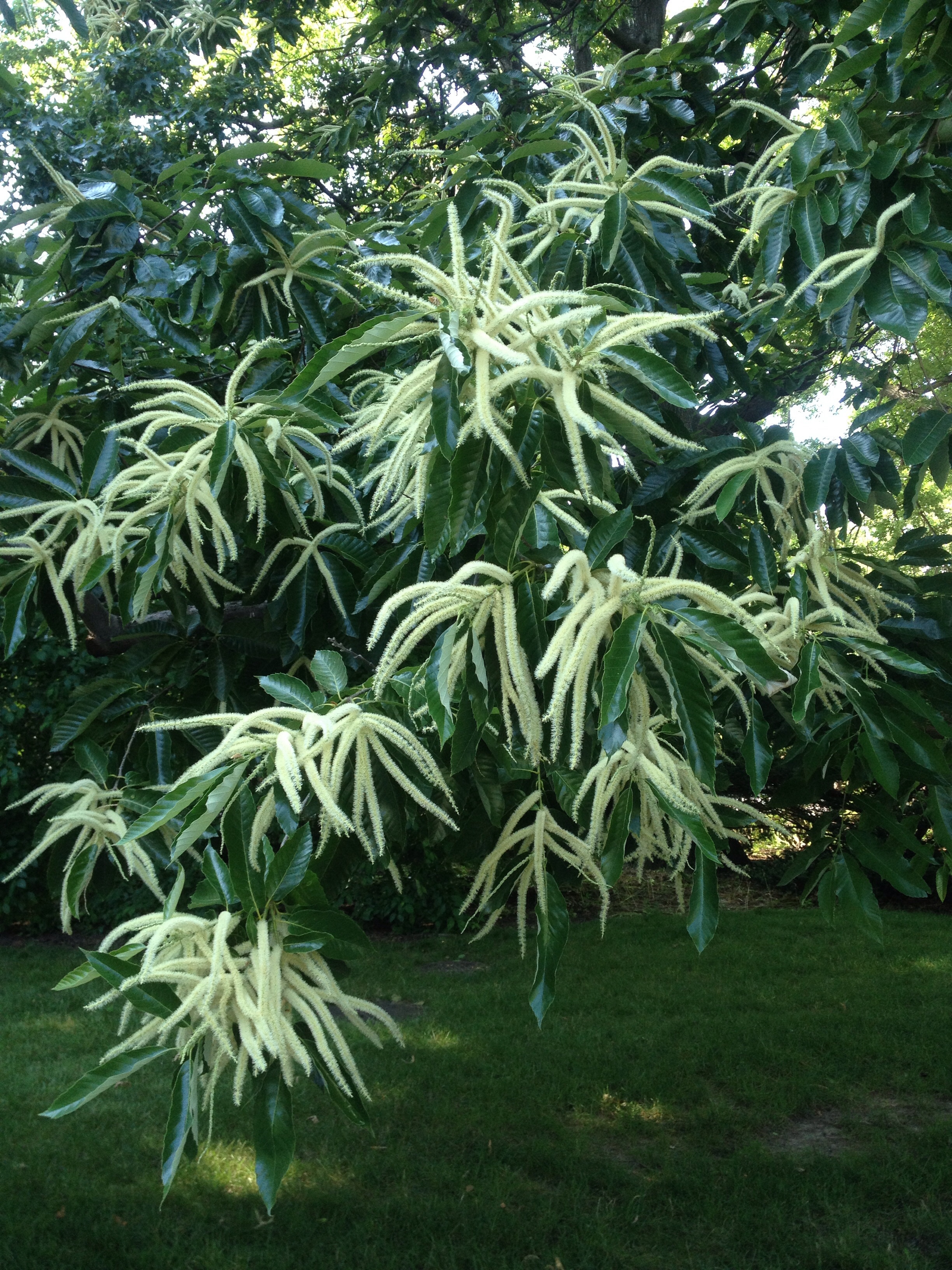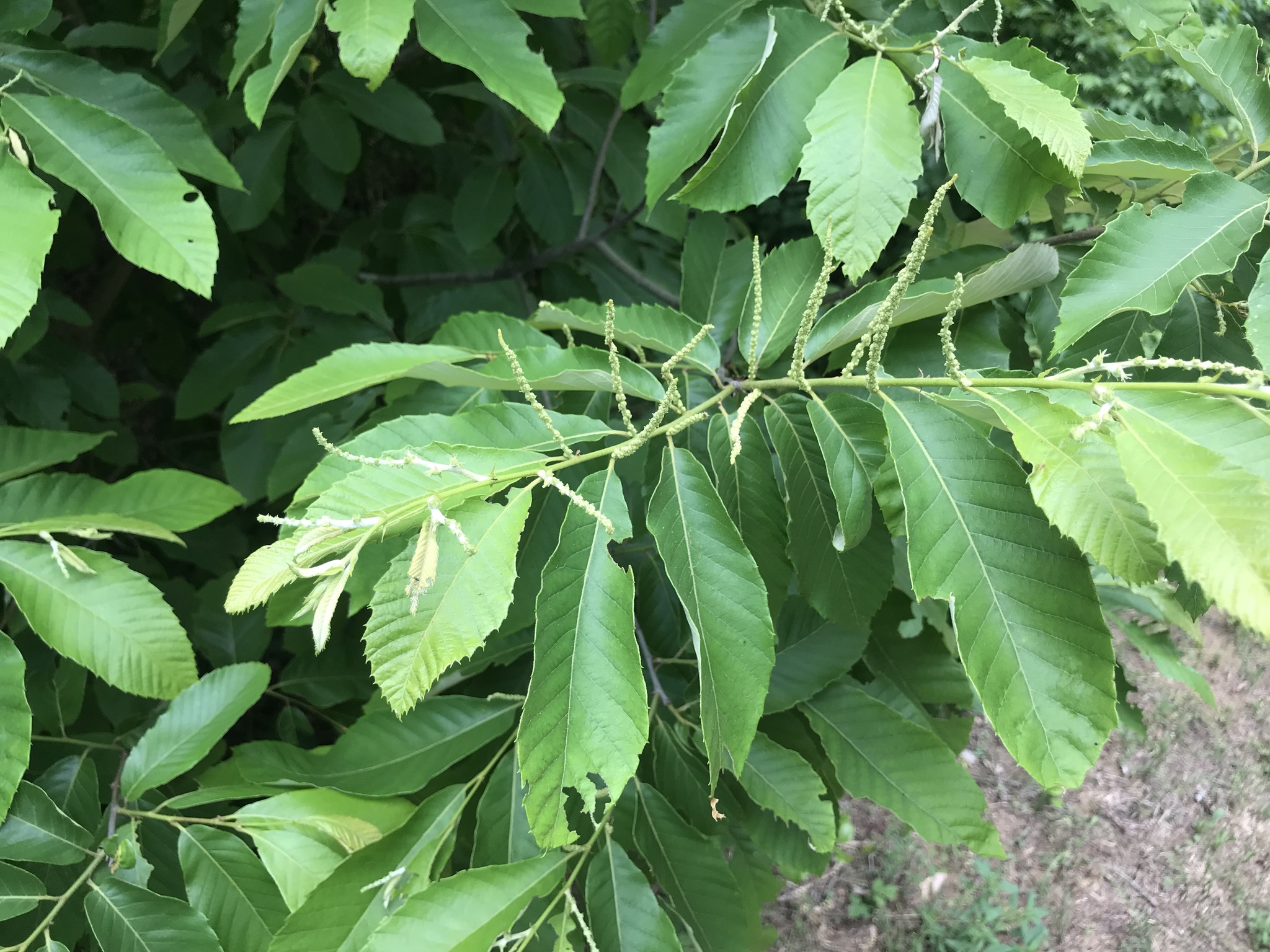|
Castanea Seguinii
''Castanea seguinii'', called Seguin chestnut, Seguin's chestnut, or Chinese chinquapin (a name it shares with ''Castanea henryi''), and in , ''mao li'', is a species of chestnut native to southcentral and southeast China. Description ''Castanea seguinii'' are small trees or shrubs, rarely reaching 12m. Their stipules are narrowly lanceolate, 0.7 to 1.5cm long, and are shed (become deciduous) when the plant is in fruit. Leaf petioles are 0.5 to 1.5cm long. Leaves are 6 to 14cm long, with their abaxial sides covered with yellowishbrown to gray scaly glands, and have sparse hairs along the veins when young. Leaf blades are oblongobovate to ellipticoblong in shape, with bases rounded or infrequently subcordate, but cuneate when young, with acuminate apices. Leaf margins are coarsely serrate. Male inflorescences are 5 to 12cm long and catkinlike. Female inflorescences are held in a cupule, with one to two (rarely more) flowers in each. Cupules are 3 to 5cm wide, and covered with spar ... [...More Info...] [...Related Items...] OR: [Wikipedia] [Google] [Baidu] |
Castanea Henryi
''Castanea henryi'', Henry chestnut, Henry's chestnut, or Chinese chinquapin (a name it shares with '' Castanea seguinii''), pearl chestnut, and in , ''zhui li'', is a species of chestnut native to south-central and southeast China. A tree reaching 30m, it is a source of good timber, but has smaller nuts than its size might suggest. Like its close relative ''Castanea mollissima ''Castanea mollissima'' (), also known as the Chinese chestnut, is a member of the family Fagaceae, and a species of chestnut native to China, Taiwan, and Korea. Description It is a deciduous tree growing to 20 m tall with a broad crown. ...'' (Chinese chestnut) it is widely cultivated in China, and quite a few varieties have been developed in recent times. References {{Taxonbar, from=Q577422 henryi Endemic flora of China Trees of China Plants described in 1916 ... [...More Info...] [...Related Items...] OR: [Wikipedia] [Google] [Baidu] |
Chestnut
The chestnuts are the deciduous trees and shrubs in the genus ''Castanea'', in the beech family Fagaceae. They are native to temperate regions of the Northern Hemisphere. The name also refers to the edible nuts they produce. The unrelated horse chestnuts (genus ''Aesculus'') are not true chestnuts, but are named for producing nuts of similar appearance that are mildly poisonous to humans. True chestnuts should also not be confused with water chestnuts, which are tubers of an aquatic herbaceous plant in the sedge family Cyperaceae. Other species commonly mistaken for chestnut trees are the chestnut oak (''Quercus prinus'') and the American beech ('' Fagus grandifolia''),Chestnut Tree in chestnuttree.net. both of which are also in the Fagaceae family. [...More Info...] [...Related Items...] OR: [Wikipedia] [Google] [Baidu] |
Rhinopithecus Roxellana
The golden snub-nosed monkey (''Rhinopithecus roxellana'') is an Old World monkey in the subfamily Colobinae. It is endemic to a small area in temperate, mountainous forests of central and Southwest China. They inhabit these mountainous forests of Southwestern China at elevations of above sea level. The Chinese name is Sichuan golden hair monkey (四川金丝猴). It is also widely referred to as the Sichuan snub-nosed monkey. Of the three species of snub-nosed monkeys in China, the golden snub-nosed monkey is the most widely distributed throughout China. Snow occurs frequently within its range, and it can withstand colder average temperatures better than any other non-human primate. Its diet varies markedly with the seasons, but it is primarily a herbivore with lichens being its main food source. It is diurnal and largely arboreal, spending some 97% of its time in the canopy. There are three subspecies. Population estimates range from 8,000 to 15,000 and it is threatened by h ... [...More Info...] [...Related Items...] OR: [Wikipedia] [Google] [Baidu] |
Trap Crop
A trap crop is a plant that attracts agricultural pests, usually insects, away from nearby crops. This form of companion planting can save the main crop from decimation by pests without the use of pesticides. /sup> A trap crop is used for attracting the insect and pests away from the field. /sup> Many trap crops have successfully diverted pests off of focal crops in small scale greenhouse, garden and field experiments; a small portion of these plants have been shown to reduce pest damage at larger commercial scales. A common explanation for reported trap cropping failures, is that attractive trap plants only protect nearby plants if the insects do not move back into the main crop. In a review of 100 trap cropping examples in 2006, only 10 trap crops were classified as successful at a commercial scale, and in all successful cases, trap cropping was supplemented with management practices that specifically limited insect dispersal from the trap crop back into the main crop. Examples ... [...More Info...] [...Related Items...] OR: [Wikipedia] [Google] [Baidu] |
Dryocosmus Kuriphilus
''Dryocosmus kuriphilus'' is a species of gall wasp known by the common names chestnut gall wasp, Oriental chestnut gall wasp, and Asian chestnut gall wasp. It is native to China and it is known in many other parts of the world, particularly the Northern Hemisphere, as an introduced species and an invasive horticultural pest. It attacks many species of chestnut (genus ''Castanea''), including most cultivated varieties. It is considered the world's worst pest of chestnuts.CABI, 2013''Dryocosmus kuriphilus''.In: Invasive Species Compendium. Wallingford, UK: CAB International. Distribution When it was first discovered, the wasp was considered to be a species of '' Biorhiza''. It was given its current name in 1951, when it was formally described.''Dryocosmus kuriphilus''. Data Sheets on Q ... [...More Info...] [...Related Items...] OR: [Wikipedia] [Google] [Baidu] |
Castanea Mollissima
''Castanea mollissima'' (), also known as the Chinese chestnut, is a member of the family Fagaceae, and a species of chestnut native to China, Taiwan, and Korea. Description It is a deciduous tree growing to 20 m tall with a broad crown. The leaves are alternate, simple, 10–22 cm long and 4.5–8 cm broad, with a toothed margin. The flowers are produced in catkins 4–20 cm long, with the female flowers at the base of the catkin and males on the rest. The fruit is a densely spiny cupule 4–8 cm diameter, containing two or three glossy brown nuts; these are 2–3 cm diameter on wild trees. The scientific name ''mollissima'' derives from the softly downy shoots and young leaves. Taxonomy Synonyms: ''Castanea bungeana'' Blume; ''C. duclouxii'' Dode; ''C. fargesii'' Dode; ''C. formosana'' (Hayata) Hayata; ''C. hupehensis'' Dode; ''C. mollissima'' var. ''pendula'' X. Y. Zhou & Z. D. Zhou; ''C. sativa'' Miller var. ''formosana'' Hayata; ''C. sativ ... [...More Info...] [...Related Items...] OR: [Wikipedia] [Google] [Baidu] |
Castanea
The chestnuts are the deciduous trees and shrubs in the genus ''Castanea'', in the beech family Fagaceae. They are native to temperate regions of the Northern Hemisphere. The name also refers to the edible nuts they produce. The unrelated horse chestnuts (genus ''Aesculus'') are not true chestnuts, but are named for producing nuts of similar appearance that are mildly poisonous to humans. True chestnuts should also not be confused with water chestnuts, which are tubers of an aquatic herbaceous plant in the sedge family Cyperaceae. Other species commonly mistaken for chestnut trees are the chestnut oak (''Quercus prinus'') and the American beech (''Fagus grandifolia''),Chestnut Tree in chestnuttree.net. both of which are also in the Fagaceae family. |
Endemic Flora Of China
Endemism is the state of a species being found in a single defined geographic location, such as an island, state, nation, country or other defined zone; organisms that are indigenous to a place are not endemic to it if they are also found elsewhere. For example, the Cape sugarbird is found exclusively in southwestern South Africa and is therefore said to be ''endemic'' to that particular part of the world. An endemic species can be also be referred to as an ''endemism'' or in scientific literature as an ''endemite''. For example '' Cytisus aeolicus'' is an endemite of the Italian flora. '' Adzharia renschi'' was once believed to be an endemite of the Caucasus, but it was later discovered to be a non-indigenous species from South America belonging to a different genus. The extreme opposite of an endemic species is one with a cosmopolitan distribution, having a global or widespread range. A rare alternative term for a species that is endemic is "precinctive", which applies to s ... [...More Info...] [...Related Items...] OR: [Wikipedia] [Google] [Baidu] |
Trees Of China
In botany, a tree is a perennial plant with an elongated stem, or trunk, usually supporting branches and leaves. In some usages, the definition of a tree may be narrower, including only woody plants with secondary growth, plants that are usable as lumber or plants above a specified height. In wider definitions, the taller palms, tree ferns, bananas, and bamboos are also trees. Trees are not a taxonomic group but include a variety of plant species that have independently evolved a trunk and branches as a way to tower above other plants to compete for sunlight. The majority of tree species are angiosperms or hardwoods; of the rest, many are gymnosperms or softwoods. Trees tend to be long-lived, some reaching several thousand years old. Trees have been in existence for 370 million years. It is estimated that there are some three trillion mature trees in the world. A tree typically has many secondary branches supported clear of the ground by the trunk. This trunk typical ... [...More Info...] [...Related Items...] OR: [Wikipedia] [Google] [Baidu] |



.jpg)
